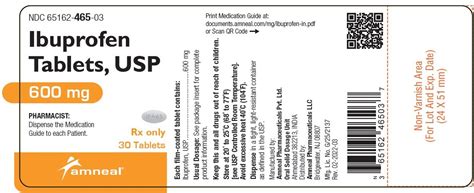The white blood cell differential, a crucial component of the complete blood count (CBC), provides invaluable insights into the body’s immune response and overall health. This test measures the levels of different types of white blood cells (WBCs), also known as leukocytes, which play a vital role in protecting the body against infections, diseases, and foreign invaders.
To understand the significance of the white blood cell differential, it’s essential to delve into the various types of WBCs and their functions. The five primary types of WBCs are neutrophils, lymphocytes, monocytes, eosinophils, and basophils. Each type of WBC has distinct characteristics and responsibilities, making them an indispensable part of the immune system.
Neutrophils: The First Line of Defense Neutrophils are the most abundant type of WBC, accounting for approximately 50-70% of the total WBC count. These cells are the first line of defense against bacterial and fungal infections, playing a crucial role in phagocytosis, the process of engulfing and destroying foreign particles and microorganisms. Neutrophils are highly mobile and can migrate quickly to sites of infection, where they release granules that contain enzymes and antimicrobial peptides to combat invading pathogens.
Lymphocytes: The Adaptive Immune Response Lymphocytes, which include B cells and T cells, are responsible for the adaptive immune response. B cells produce antibodies to neutralize pathogens, while T cells directly attack and destroy infected cells. Lymphocytes account for approximately 20-40% of the total WBC count and are essential for long-term immune memory, enabling the body to recognize and respond to previously encountered pathogens.
Monocytes: The Mature Macrophages Monocytes are large, mononuclear cells that mature into macrophages, which are essential for the removal of dead cells, debris, and foreign substances from the body. Monocytes account for approximately 5-10% of the total WBC count and play a critical role in the regulation of the immune response, presenting antigens to lymphocytes and producing cytokines to coordinate the immune response.
Eosinophils: The Allergy Fighters Eosinophils are granulocytes that play a crucial role in fighting parasitic infections and in allergic reactions. These cells account for approximately 1-4% of the total WBC count and are involved in the regulation of the immune response, particularly in the context of asthma and other allergic diseases.
Basophils: The Inflammatory Mediators Basophils are the least abundant type of WBC, accounting for less than 1% of the total WBC count. These cells are involved in inflammatory reactions, particularly in the context of allergic responses, and play a role in the regulation of the immune response.
Interpretation of the White Blood Cell Differential The white blood cell differential is typically reported as a percentage of the total WBC count. The normal ranges for each type of WBC are:
- Neutrophils: 50-70%
- Lymphocytes: 20-40%
- Monocytes: 5-10%
- Eosinophils: 1-4%
- Basophils: %
An abnormal white blood cell differential can indicate a range of conditions, including infections, inflammatory diseases, and blood disorders. For example, an elevated neutrophil count may indicate a bacterial infection, while an increased lymphocyte count may suggest a viral infection or an immune disorder.
An abnormal white blood cell differential should always be interpreted in the context of the patient's clinical presentation, medical history, and other laboratory results. A healthcare professional should be consulted to determine the underlying cause of any abnormal results.
Clinical Applications of the White Blood Cell Differential The white blood cell differential has numerous clinical applications, including:
- Infection diagnosis: The white blood cell differential can help diagnose bacterial, viral, and fungal infections, as well as parasitic infestations.
- Inflammatory disease monitoring: The white blood cell differential can monitor the activity of inflammatory diseases, such as asthma, rheumatoid arthritis, and inflammatory bowel disease.
- Blood disorder diagnosis: The white blood cell differential can help diagnose blood disorders, such as leukemia, lymphoma, and myeloproliferative neoplasms.
- Immunodeficiency diagnosis: The white blood cell differential can help diagnose immunodeficiency disorders, such as HIV/AIDS and congenital immunodeficiencies.
Step-by-Step Guide to Interpreting the White Blood Cell Differential
- Review the patient's medical history and clinical presentation.
- Obtain a complete blood count (CBC) with differential.
- Compare the white blood cell differential results to the normal ranges.
- Consider the potential causes of any abnormal results.
- Consult with a healthcare professional to determine the underlying cause of any abnormal results.
Conclusion The white blood cell differential is a vital component of the complete blood count (CBC), providing essential information about the body’s immune response and overall health. By understanding the different types of white blood cells and their functions, healthcare professionals can interpret the white blood cell differential and diagnose a range of conditions, from infections and inflammatory diseases to blood disorders and immunodeficiencies.
What is the normal range for neutrophils in the white blood cell differential?
+The normal range for neutrophils is 50-70% of the total white blood cell count.
What does an elevated lymphocyte count indicate?
+An elevated lymphocyte count may indicate a viral infection, an immune disorder, or a blood disorder such as lymphoma.
What is the clinical significance of the white blood cell differential?
+The white blood cell differential provides essential information about the body's immune response and overall health, enabling healthcare professionals to diagnose and monitor a range of conditions, from infections and inflammatory diseases to blood disorders and immunodeficiencies.
By recognizing the importance of the white blood cell differential and its clinical applications, healthcare professionals can provide accurate diagnoses and effective treatment plans, ultimately improving patient outcomes and quality of life.



